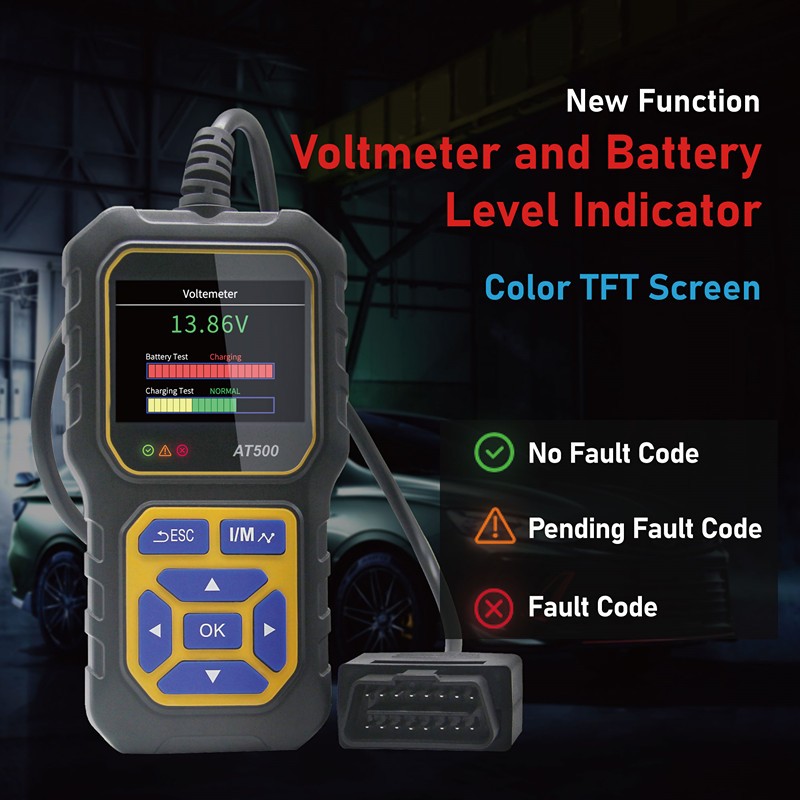The AT500 OBD2 scanner is a valuable tool for vehicle diagnostics, offering a range of functions to help identify and resolve car issues. This guide provides a step-by-step walkthrough on how to use the AT500 effectively.
Understanding the AT500 OBD2 Scanner
The AT500 is compatible with most 1996 and later gasoline and diesel vehicles equipped with an OBD II port. This versatile scanner boasts a 2.4-inch HD TFT display and supports multiple languages. It allows users to read and clear fault codes, view live data streams, perform system tests, and access vehicle information. Key features include a voltmeter, battery level indicator, and the ability to graph data waveforms.
Connecting the AT500
Locate the OBD II port in your vehicle, typically under the dashboard on the driver’s side. Plug the AT500 scanner into the port. Turn the vehicle’s ignition to the “on” position without starting the engine. The scanner will power on and initialize.
Navigating the Menu
The AT500’s intuitive menu allows easy navigation. Use the directional buttons to select different options, such as reading codes, viewing data streams, or performing tests. The screen displays clear instructions and data readings.
Reading and Clearing Fault Codes
Select the “Read Codes” function to retrieve diagnostic trouble codes (DTCs). The AT500 will display any stored codes, indicating potential problems. Use the “DTC Lookup” feature to understand the meaning of each code. After addressing the issues, use the “Clear Codes” function to erase the DTCs.
Viewing Live Data Streams
The “Data Stream” function displays real-time sensor data, such as engine speed, coolant temperature, and oxygen sensor readings. This allows you to monitor vehicle performance and identify potential issues. The AT500 can graph this data for easier analysis.
Performing System Tests
The AT500 supports various system tests, including cranking and charging system tests, O2 sensor tests, and EVAP system tests. These tests help pinpoint specific problems within these systems. For example, the cranking test analyzes the starting system’s voltage and cranking time.
Utilizing Advanced Features
The AT500 offers additional features like freeze frame data, I/M readiness status, and vehicle information (VIN, CIN, CVN). These functionalities provide a comprehensive overview of the vehicle’s condition and diagnostic history.
Conclusion
The AT500 OBD2 scanner is a powerful tool for DIY car maintenance and diagnostics. By understanding its functions and utilizing its features, you can gain valuable insights into your vehicle’s performance and address potential problems efficiently. The AT500 supports various communication protocols, ensuring compatibility with a wide range of vehicles. Refer to the user manual for detailed instructions and specific vehicle applications.



